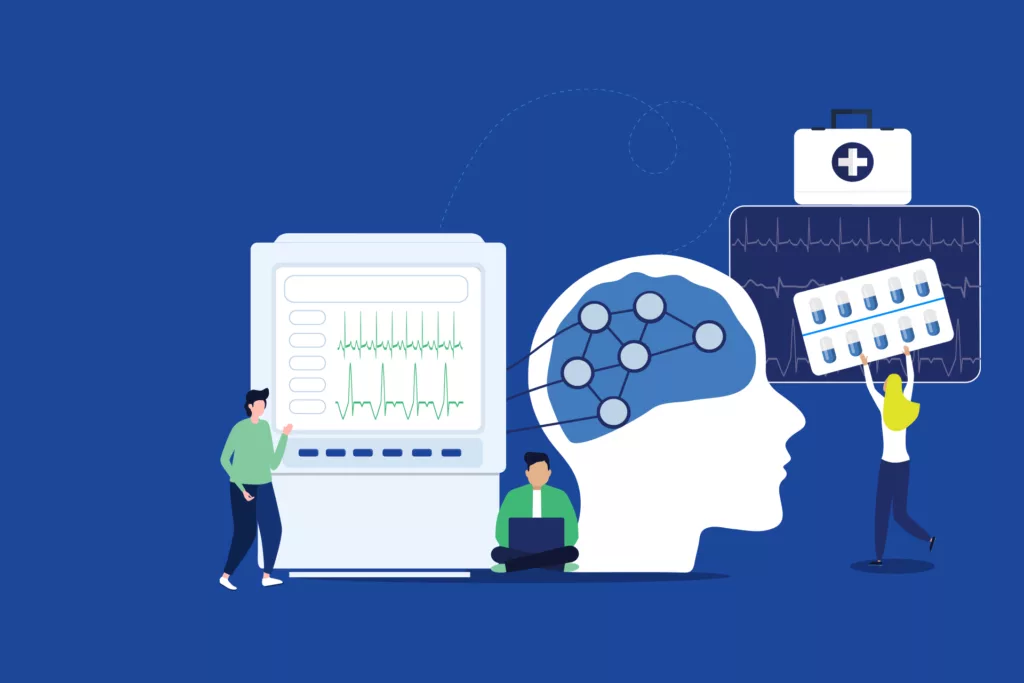This might come as a surprise to some individuals as they dive into the listed ingredients of the newest FDA-approved anti-depressant to hit the market, Auvelity. Let’s take a look at this new product and how a cough medicine found its way into this new treatment.
Auvelity is a combination product that contains dextromethorphan (yes, the cough suppressant) along with an antidepressant that has already been on the market for some time, bupropion (known by the trade name Wellbutrin). Approved by the FDA on August 19, 2022, Auvelity is a once-daily treatment for adults with major depressive disorder (MDD).
History and Background of Dextromethorphan
Dextromethorphan originally received FDA approval in 1958 for its use as a cough suppressant. Best known as the “DM” component of Robitussin DM, dextromethorphan is also found in several other cough and cold combinations available over the counter.
Incidentally, this is not the first time that dextromethorphan has been FDA-approved for a use other than to suppress a cough. In 2010, the FDA approved the use of dextromethorphan in combination with quinidine for the treatment of pseudobulbar affect under the brand name Nuedexta. Pseudobulbar affect is a condition that is characterized by episodes of sudden, uncontrollable, and inappropriate laughing or crying. This condition is typically prevalent in individuals with neurological conditions and thus, the patients in Nuedexta’s clinical trials all had an underlying diagnosis of either amyotrophic lateral sclerosis (ALS) or multiple sclerosis (MS).
Dextromethorphan has a long history of abuse dating back to the 1950s which grew to new heights beginning in the early 2000s, most commonly with teenagers taking high doses of dextromethorphan by consuming large quantities of Coricidin, Nyquil, or Robitussin. These formulations are typically used to treat the common cold and also contain other ingredients such at acetaminophen, antihistamines, and decongestants. Dextromethorphan abuse is commonly referred to on the street as “Skittling,” “Dexing,” “Robo-dosing,” or “Robo-tripping”. Abusers report a heightened sense of perceptual awareness, altered time perception, and visual hallucinations, very similar to the neurobehavioral effects of ketamine and phencyclidine (PCP). As a result, several states have since implemented and/or passed legislation prohibiting the sale or purchase of dextromethorphan products to persons under the age of 18.
Chemically, dextromethorphan is the D-isomer of the codeine synthetic analog, levorphanol. Dextromethorphan has a chemical structure similar to that of other dissociative agents such as ketamine and phencyclidine (PCPs). Its neurobehavioral effects are attributed to the action of the metabolite, dextrorphan at the N-methyl-d-aspartate (NMDA) receptor.
Clinical Benefits of Auvelity
Now that we have the history and background of dextromethorphan, we can explore the clinical benefits of Auvelity and its role in the treatment of depression. Auvelity is considered the second FDA-approved NMDA receptor antagonist used for depression. The first is the ketamine isomer, Spravato (eskatamine), used in treatment-resistant depression, in conjunction with an oral antidepressant. Spravato was FDA-approved in 2019 as a single-dose nasal spray to be administered under the supervision of a healthcare provider in a Spravato-certified treatment facility. The patient must be monitored by a healthcare professional for at least 2 hours after administration due to the risk of delayed sedation or dissociation. Clinical trial data indicated that Spravato reduced depressive symptoms in as little as four hours in some patients with symptom improvement maintained for four weeks. In 2020, Spravato gained FDA approval for the treatment of MDD in patients with acute suicidal ideation or behavior and has become a useful tool in crisis management of depression.
The most exciting feature of Auvelity is that it has rapid-acting antidepressant activity and starts working within one week after starting therapy. In contrast, most of the antidepressants currently on the market take nearly a month to exhibit their clinical effects. Clinical trials tested Auvelity against a placebo and incidentally against bupropion by itself. The bupropion dose in the trial was 105mg and is the same dose used in Auvelity. This low dose of bupropion is considered sub-therapeutic in a once-daily formulation. So why is it in there? Auvelity is leveraging a side effect of bupropion which can affect the metabolism of other medications and cause them to accumulate at higher levels in the body. Bupropion is a strong inhibitor of CYP2D6, which is essential in the metabolism of dextromethorphan. Therefore, bupropion is essentially utilized as a booster for dextromethorphan and most likely is not exhibiting any anti-depressive effects due to its sub-therapeutic dose.
The FDA approval was based on the Phase III GEMINI and Phase II ASCEND trials which showed Auvelity was statistically superior in the improvement of depressive symptoms. The GEMINI study used a placebo as a comparator and the ASCEND study used a subtherapeutic dose of bupropion (the same dose used in Auvelity). Auvelity is well tolerated, and the most common adverse reactions reported in trials were dizziness, headache, diarrhea, somnolence, dry mouth, sexual dysfunction, and hyperhidrosis. Auvelity is not FDA-approved for use in combination with other anti-depressants and there are potential drug interactions if used in that manner.
Looking at the evolution of the treatment of depression, it appears that the science is moving towards agents which elicit rapid action, a very different approach than the selective serotonin reuptake inhibitor (SSRI) and serotonin and norepinephrine reuptake inhibitor (SNRI) treatments such as Prozac (fluoxetine), Lexapro (escitalopram), Effexor (venlafaxine), etc., which can take up to 4 weeks to have any effect and have been the mainstay of treatment for the past three decades.
Rapid-Acting Drugs in the Pipeline
Next, let’s take a quick peek at a few of the rapid-acting drugs that may be coming down the pipeline for the treatment of depression, some of which may look familiar.
Starting with esmethadone, or d-methadone, a form of methadone that induces rapid and sustained antidepressant effects by targeting the NMDA receptor, the same as Spravato and Auvelity. Note that this formulation of methadone, esmethadone, has undergone studies to ensure that there is not any meaningful opioid abuse potential. Unfortunately, recent results from a Phase III study of monotherapy treatment for MDD reported esmethadone failed clinical trials due to a high placebo response rate. However, additional Phase III clinical trials are currently underway for adjunctive treatment of MDD, and preliminary data indicates response rates that showed favorable clinical response 4 days after single-dose treatment. Clinical trials are still underway for esmethadone, and it may be a few years before filing with the FDA for approval occurs.
Next is ketamine, another NMDA receptor antagonist, which received FDA approval in 1970 as an anesthetic agent used in diagnostic and surgical procedures but has also had a storied history of abuse as a party drug. This formulation is slightly different from Spravato (eskatamine), but its effects on symptoms of depression are very similar. It is currently being studied in Phase II clinical trials as a nasal treatment for acute suicidal ideation in MDD and in post-traumatic stress disorder (PTSD) as well as in Phase I trials as a sublingual formulation for the same conditions. Early trial data has shown positive results and it is anticipated that an FDA approval could come as early as 2024.
Another controversial agent, psilocybin, is currently being studied for use in both treatment-resistant depression and major depression. It is a tryptamine alkaloid found in several species of psilocybe mushrooms and acts as a partial agonist on the 5-HT2A receptor. Preliminary trial results indicate that a single dose has been shown to exhibit measurable clinical effects in both populations within one week and sustained for twelve months. Psilocybin is currently a DEA Schedule I substance and treatments would likely need to take place in the physician’s office much like what is currently done with Spravato.
All of these, especially the psilocybin agent, is still a long way from filing with the FDA and many consider psilocybin very controversial due to its DEA schedule I status, so it will be interesting to see where things go from here. However, don’t be surprised in the near future if your antidepressant contains a substance that has been used, or even abused, in the past. Although discoveries in science and medicine continue to move forward at a breakneck pace, sometimes circling back and revisiting an old friend can provide benefits that may be life-changing.







